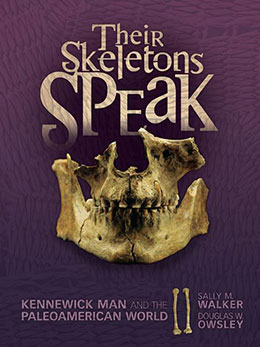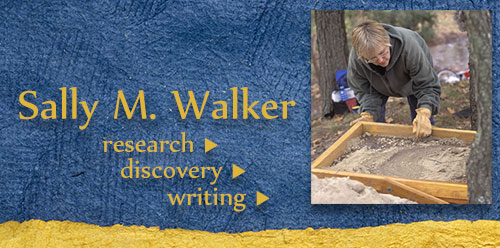
Their Skeletons Speak:
Kennewick Man and the Paleoamerican World
About the Book
On July 28, 1996, two young men stumbled upon human bones in the shallow water along the shore of the Columbia River near Kennewick, Washington. Was this an unsolved murder? The remnants of some settler’s or Native American’s unmarked grave? What was the story behind this skeleton?
Within weeks, scientific testing yielded astonishing news: the bones were more than 9,000 years old! The skeleton instantly escalated from interesting to extraordinary. He was an individual who could provide firsthand evidence about the arrival of humans in North America. The bones found scattered in the mud acquired a name: Kennewick Man.
Douglas W. Owsley and I take you through the painstaking process of how scientists determined who Kennewick Man was and what his life was like. New research, never-before-seen photos of Kennewick Man’s remains, and a lifelike facial reconstruction will introduce you to one of North America’s earliest residents.
But the story doesn’t end there. We’ll also introduce you to a handful of other Paleoamerican skeletons, exploring their commonalities with Kennewick Man. Together, their voices form a chorus to tell the complex tale of how humans came to North America—if we will only listen.
Awards and Recognition
- Bank Street College Best Children’s Book award
- Benjamin Franklin Award
- Chicago Public Library Best Books 2012
- Cooperative Children’s Book Center (CCBC) Choices
- Independent Publishers Book Award
- NCSS/CBC Notable Social Studies Trade Book for Young People
- School Library Journal Best Children’s Books 2012
- YALSA Excellence in Nonfiction for Young Adults Award nominee 2013
Reviews
“This detailed study of the discovery and forensic evaluation of the skeleton dubbed ‘Kennewick Man’ puts forensic TV shows to shame. From his accidental discovery in 1996 through multiple examinations by scientists with ever-improving forensic tools and years of unexpected storage due to NAGPRA (Native American Graves Protection and Reparation), an actual human being emerges from a time long gone, speaking to us through his bones. Entering briefly into this long-term investigation are the far more shadowy figures of other Paleoamericans—Spirit Cave Man, Arch Lake Woman, and the Horn Shelter People. Scattered throughout the lucid, readable text are tightly focused informational bits on such topics as CT scans, radiocarbon dating, and NAGPRA practices. Sharp color photos, some nice artwork, and good maps provide clear visuals of the bones themselves, and the features that helped define the man and his life. A final facial reconstruction leaves readers face-to-face with a real person—someone readers would recognize if they met him on the street (we know how tall he was, how much he weighed, that one arm was stronger than the other, etc.). Walker reminds readers that it was not their relics, but living, breathing Paleoamericans who first arrived, settled, lived, and died in the long-gone American past … Lucid writing, fine scientific explanations, and attractive bookmaking make this a winner.” (School Library Journal, starred review)
“Kennewick Man, a skeleton retrieved from the Columbia River in 1996, is the focal point of this study, an object lesson in how scientists can deduce amazing amounts of information from what may seem to the untutored viewer to be unimpressive dings, cracks, and concretions in bone or the simplest position of a limb in its final resting place. To demonstrate how far the field of paleoamerican studies has come in the past century, Walker and Owsley backtrack to discuss several other notable human remains that have altered the timetable of human settlement and place of origin. There’s a lot of technical information here, on topics such as isotope-based dating techniques, tooth-shape comparison, advanced CT scans, sediment accretions, bone stress, wound recovery, and the like, but for serious readers who delight in forensic investigation or perhaps consider a future in the field, this material will push their understanding further than most titles on this subject for youth readership. Source notes, bibliographies, and an index are included.” (The Bulletin of the Center for Children’s Books)

written by Sally M. Walker and Douglas W. Owsley
Carolrhoda Books, Aug 2012
hardcover: 978–0761374572
136 pages, ages 11 and up

